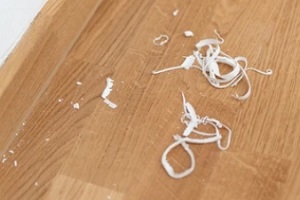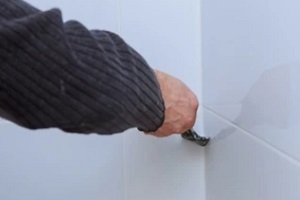 Caulk is one of the most important unsung heroes of your home. You probably do not even really notice it, since careful caulk installation means clean, symmetrical lines around the many joints and corners of your house. However, even the most robust caulk and the best caulking jobs will break down over time, which means that you may need to remove the caulk in order to install new materials. Liquid caulk remover can assist in this process, but you must use it correctly in order for it to work. Here are some tips to help you properly use liquid caulk remover during your project.
Caulk is one of the most important unsung heroes of your home. You probably do not even really notice it, since careful caulk installation means clean, symmetrical lines around the many joints and corners of your house. However, even the most robust caulk and the best caulking jobs will break down over time, which means that you may need to remove the caulk in order to install new materials. Liquid caulk remover can assist in this process, but you must use it correctly in order for it to work. Here are some tips to help you properly use liquid caulk remover during your project.
Consider The Materials You Are In Contact With
One of the most important steps when using liquid caulk remover is to carefully consider what type of material you are working with (that is, what material is being caulked and what type of caulk you would like to remove) before applying the removal liquid.
For example, most liquid caulk will ruin fabrics like suede and leather, and it is not suitable for walls with latex paint, bathtubs that have been painted or other areas where the color may be harmed. Some types of liquid caulk remover work on silicone caulk, while others do not. Read the label to check that the product is suited for your intended project.
Prepare The Area
Liquid caulk remover does not make caulk dissolve; instead, it loosens the bond that the caulk has on the surface due to its adhesives. That means that in order for the remover to do its job, it must be able to come into contact with as much of the caulk as possible. Thoroughly clean the caulk so that debris, dust and other materials that would stand between the caulk itself and the liquid caulk remover are taken out of the equation. This way, the liquid can fully penetrate as intended in order to lift the caulk for easy removal.
Apply The Liquid Caulk Remover And Wait
Next, once the area is clean, apply the liquid caulk remover. You will need to give it some time to break down the adhesive bonds between the caulk and the surface, but how long exactly you must wait depends on the product that you selected. Some can be as quick as 60 seconds. It is best to keep the room ventilated, such as by opening windows, but there is no need to direct a fan at your work area (this may in fact dry the liquid caulk remover too soon).
While you may be tempted to use your wait time to continue to apply the liquid across all of the caulk that you intend to work on for the day, it is best to keep your work in small areas at one time in order to avoid unexpected problems. Once the remover has done its job, wipe and rinse the area.
Use Tools To Remove The Remaining Caulk
 Once the liquid caulk remover has had the time to break down the adhesion of the caulk to its surfaces, you will still need to use tools to remove it. Depending on the type of caulk, you may simply be able to peel it off now. For other types, a caulk removal tool or even the edge of a razor blade (be careful; gloves are recommended) can be used to take out the rest of the caulk. Remember that you should remain vigilant against damage to the underlying surface beneath the caulk when you use tools to remove it.
Once the liquid caulk remover has had the time to break down the adhesion of the caulk to its surfaces, you will still need to use tools to remove it. Depending on the type of caulk, you may simply be able to peel it off now. For other types, a caulk removal tool or even the edge of a razor blade (be careful; gloves are recommended) can be used to take out the rest of the caulk. Remember that you should remain vigilant against damage to the underlying surface beneath the caulk when you use tools to remove it.
You could chip, scratch or leave ruts in the material if you are not careful about the sharp edges of your tools. Instead, gently work your tool underneath the edge of the caulk line and slowly lift it off of the surface so that you can avoid damaging your materials. Stubborn caulk can be hit again with the liquid remover and left to sit for longer; your package should include instructions for such a scenario.
Trust The Experts To Help You Tackle Your Caulking Projects Without Surface Damage
Removing old or damaged caulk and applying new material is a more complex process than it may seem if you want to do it right. To make sure that you do not cause any unnecessary damage to your surfaces and succeed in achieving a perfect seal when you recaulk, there is no shame in leaving this DIY task to the professionals. The experts at Waterproof Caulking & Restoration would be happy to tackle this project for you. Reach out to schedule an appointment to discuss your goals and concerns.
